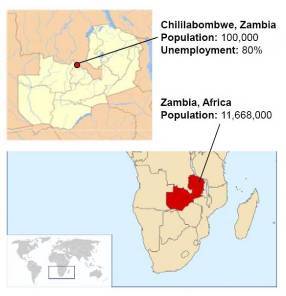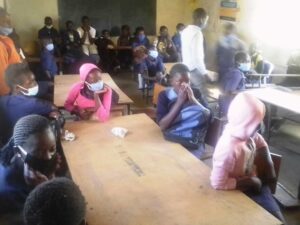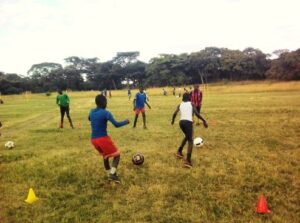The Geographical and Social situation
The nation of Zambia lies below the Democratic Republic of the Congo in southern Africa and is a region speculated by many to be on the brink of undergoing the worst famine in human history. The country has been familiar with this prospect for a long time.
From 2001 to 2002, southern Africa experienced two consecutive years with no rainfall, which negatively impacted an estimated 2.3 million households that were dependent on agricultural production. This created a food deficit for farmers and restricted access to food.
Since then, according to the International Food Policy Research Institute’s 2016 Global Hunger Index, hunger in Zambia has only gotten worse. The data from the report suggests that Zambia is currently the third hungriest nation in the world, with 47.8 percent of the population undernourished, a 40 percent or higher rate of stunting in children five or younger, and a mortality rate of 6.4 percent in children five or younger.
 A root cause of severe hunger in Zambia is the occurrence of a 2015 El Nino weather event that is speculated to have been the strongest since 1982. El Nino weather events occur when the waters of the tropical Pacific (in this case) or other bodies of water begin to warm, which typically results in droughts and floods that directly impact the closest landmass and affect weather systems across the world. This particular event caused a severe drought in the country that remains ongoing today, the impacts of which unfortunately extend far beyond Zambian borders.
A root cause of severe hunger in Zambia is the occurrence of a 2015 El Nino weather event that is speculated to have been the strongest since 1982. El Nino weather events occur when the waters of the tropical Pacific (in this case) or other bodies of water begin to warm, which typically results in droughts and floods that directly impact the closest landmass and affect weather systems across the world. This particular event caused a severe drought in the country that remains ongoing today, the impacts of which unfortunately extend far beyond Zambian borders.
Top 10 Facts about Poverty in Zambia
- In Zambia, 60 percent of people live below the poverty line and 42 percent are classified as extremely poor.
- Poverty rates are highest for female-headed households, with extreme poverty levels of more than 60 percent in rural areas and 15 percent in urban areas.
- The effects of poverty are seen in children’s development. Around 15 percent of children in Zambia are underweight, and 40 percent are stunted.
- Poverty is worst in rural Zambia, where 83 percent of people live below the poverty line.
- Zambia’s isolation limits access to markets and technical training or skills, which hurts the economy and contributes to poverty.
- Food insecurity is high, as more than 350,000 people in the country do not have access to a regular food supply.
- Due to high food prices coupled with extreme poverty, families spend 64 percent of their income on basic food needs.
- High rates of HIV play a role in exacerbating poverty in Zambia. Approximately 14.3 percent of adults in the country have HIV and 1.5 million children are orphaned as a result of the disease.
- Poor healthcare coupled with disease and hunger has led to life expectancy in Zambia of just 5 years, the fourth-lowest in the world.
- While still low, Zambia’s ranking on the Human Development Index has increased significantly, from 167 to 141 out of 188 in the span of a year.
HIV/AIDs (UNAIDS-Report) In Zambia in 2018: 1 200 000 people were living with HIV. HIV incidence per 1000 uninfected—the number of new HIV infections among the uninfected population over one year—among all people of all ages was 2.97. HIV prevalence—the percentage of people living with HIV—among adults (15–49 years) was 11.3%. Poverty-



 A root cause of severe hunger in Zambia is the occurrence of a 2015 El Nino weather event that is speculated to have been the strongest since 1982.
A root cause of severe hunger in Zambia is the occurrence of a 2015 El Nino weather event that is speculated to have been the strongest since 1982. 

